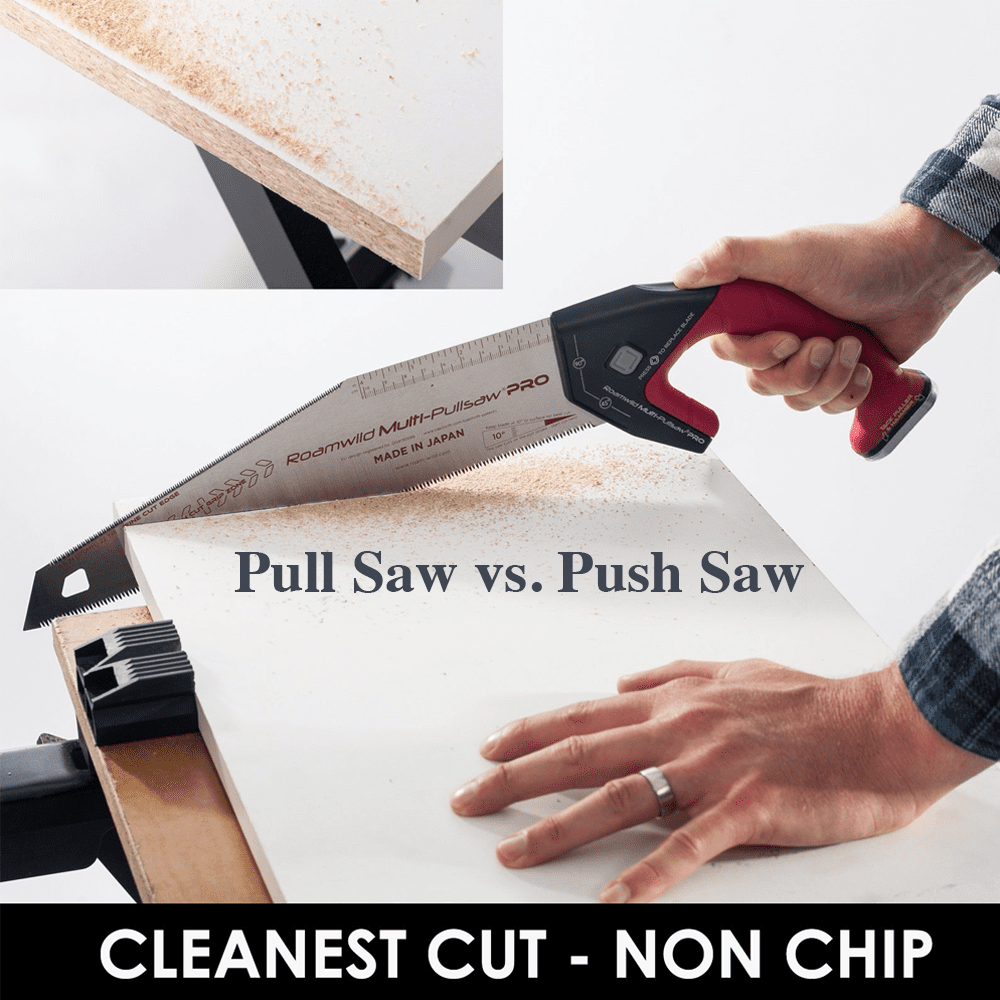When it comes to woodwork etc, most heavy-duty jobs are done these days with power saw and machinery. However, there is very much still a place for the traditional hand saw, especially for the home decorator, DIY-er and handyman. There are two main choices when it comes to picking a handsaw, and these are the conventional “Western”-style push saw and the “Japanese” pull saw. But, is one better than the other, and which one should you chose? Here is how these two main types of saw compare in their ways of cutting technique and blade design, etc.
Japanese Saw
The hardened steel blade of a Japanese pull saw is designed so each tooth has three cutting edges (except the rip tooth, which has two). This feature means that the saw can cut straighter, faster, smoother, and cleaner and yet still is able to rip and crosscut.
What this means, is that the Japanese pull saw can be used for a wider variety of cutting jobs, on a wider variety of materials, such as wood, laminate, chipboard and plastics, than the Western push saw, making it more efficient and versatile overall.
Western Saw
A typical Western style push saw has a wide, tapering blade and a distinctively shaped wood or plastic handle that comfortably fits the hand.
There are two main types of Western push saw, and these are the crosscut saw and the rip, or ripping, saw. A ripping saw, which cuts in the direction of the grain, has a zero to positive rake, fewer teeth per inch, a wider set, and a deep gullet behind each tooth for transporting sawdust out of the cut. A crosscut saw, designed for cutting across the grain, has more teeth per inch, a zero to negative rake, narrower set, and a beveled cutting edge.
General Cutting
As mentioned above, Japanese saws tend to have thinner, more flexible blades than their Western counterparts. This results in a thinner kerf, less effort to remove material, and usually much more control over the cut. Basically, it means that you can cut longer, more accurately, and with less strength and effort required.
The thicker blade that is usually on a Western saw means that it has a thicker saw kerf and more material to remove. This is why you need more strength and energy to complete a cut. However, a properly tuned and sharpened Western handsaw can cut extremely well. A Western saw is also less maneuverable than a Japanese saw. This can be a good thing because once you start the cut, it will stay in a straight line. However, as the Japanese saw works on the pull cut, this automatically gives more reliability and a straighter cut, with less need to checking constantly for said straightness.
Detailed Work
Many woodworkers find a Japanese saw easier to use than a push saw for fine detailed work due to the extra control afforded by pulling the blade towards the body. Japanese saws also rarely need to be sharpened because the blade is very hard. Except for very expensive saws, it is more practical to replace a Japanese blade rather than attempting to hone it yourself.
Final Thoughts
Japanese pull saws outshine the Western push saw because:
- they give cleaner cuts
- they saw with much less effort and better quality results and finishes
- they cut a larger range of materials

